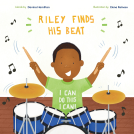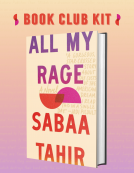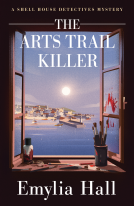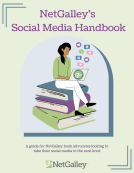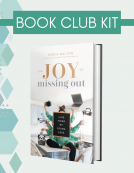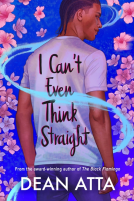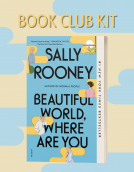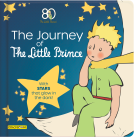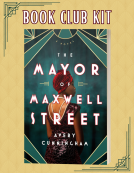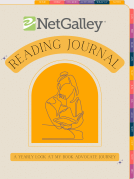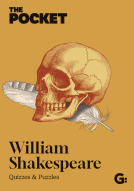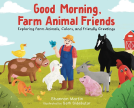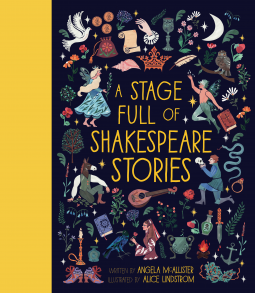
A Stage Full of Shakespeare Stories
12 Tales from the world's most famous playwright
by Angela McAllister
This title was previously available on NetGalley and is now archived.
Send NetGalley books directly to your Kindle or Kindle app
1
To read on a Kindle or Kindle app, please add kindle@netgalley.com as an approved email address to receive files in your Amazon account. Click here for step-by-step instructions.
2
Also find your Kindle email address within your Amazon account, and enter it here.
Pub Date 6 Sep 2018 | Archive Date 6 Nov 2018
Quarto Publishing Group - Frances Lincoln Childrens | Frances Lincoln Children's Books
Talking about this book? Use #AstageFullOfShakespeareStories #NetGalley. More hashtag tips!
Description
Get lost in Shakespeare’s most loved stories with this beautiful anthology of some of the most popular stories in the world. Introduce the children in your life to a collection of the most important stories every written, collected and retold by the much-loved author Angela McAllister. Featuring classics such as The Tempest, A Midsummer Night’s Dream, Romeo and Juliet, Hamlet, and Othello, each story is rewritten in a comprehensive way that is accessible for children. This perfectly sized anthology is stunningly illustrated by collage artist Alice Lindstrom whose incredible artwork makes these stories dance to life before your very eyes.
This lavish follow-up to A Year Full of Stories and A World Full of Animal Stories is the perfect gift for book lovers young and old.
The World Full of… series is a collection of beautiful hardcover story treasuries. Discover folktales from all around the world or be introduced to some of the world’s best-loved writers with these stunning gift books, the perfection addition to any child’s library.
Also available from the series: A Year Full of Stories, A World Full of Animal Stories, A World Full of Dickens Stories, A World Full of Spooky Stories, A Year Full of Celebrations and Festivals, and A Bedtime Full of Stories.
Marketing Plan
Focus: Outreach to fans and sellers of the first two books with the additional of the theatre media and bloggers.
- Series sell-sheet, special email pitch to all accounts selling x-number of more of either of the two previous titles
- One-on-one pitch to all bloggers/media who covered the first two books
- Pitch to cities with large Shakespeare festivals
- One-on-one pitch to all bloggers/media who cover Poetry for Kids: William Shakespeare (coming Spring 2018)
- Direct pitch to Playbill for Holiday Gift Round-up
- Educators' Guide for entire series
Available Editions
| EDITION | Other Format |
| ISBN | 9781786031150 |
| PRICE | US$24.99 (USD) |
| PAGES | 128 |
Featured Reviews
I don't like Shakespeare.
I chose to download A Stage Full of Shakespeare Stories to see if it would make a good gift for my friend who has a degree specialising in Shakespeare, and had very little expectation of enjoying it much myself.
I can't put it down.
This book is simply stunning with just enough illustrations to add depth to the text without making it too focused on the illustrations, and the stories have been adapted in a way that really explains the original plays (which made no sense to me when I read them) and makes them enjoyable to read! I've loved every story in the book, and found that it was a lovely book to dip in and out of.
I can't recommend A Stage Full of Shakespeare Stories highly enough as an introduction to Shakespeare or as a gift for someone who loves Shakespeare already! It's definitely one to be loved by all who read it, whether you're young or old.
I thought this book was so cute and I absolutely love this idea.
These are short versions of some of Shakespeare most popular plays. The writing is easy to understand, and the illustrations are bright and beautiful.
This book is a great way to introduce Shakespeare to children, and I think it is so important to make classic literature fun and engaging for children at a young age. If they already have an appreciation for the classics then by the time they are forced to read these stories in school, it wont seem so daunting and it wont seem so boring. It will be easier to understand because they already know the story.
So many kids don't read, and I worry it's because reading was never fun for them, it was always school work. We need to grow and nurture an appreciation for these masterpieces at a young age and having books like this will make that so much easier.
I will definitely pick up a copy of this book when it is released.
I give this book five stars, something that I do not do often. This is a wonderful Shakespearean compilation in prose form with bright and engaging illustrations. Included are twelve of the Bard's best known works, both tragedies and comedies. Each tale starts with a quote and a pictorial depiction of the main characters that quickly engage the reader. The stories are well told and surprisingly comprehensive. Elementary school children could read these stories on their own while they could be read aloud to younger children, much in the way that fairy tales are shared. As an adult, I also appreciated the clarity in the presentation of these tragedies and comedies. This book is a keeper! Thank you for this one NetGalley.
 Lucy G, Reviewer
Lucy G, Reviewer
Love that this book makes Shakespeare accessible to all ages and I'm sure will spark an interest in literature. Even as an adult I found this book a great read and very true to the original tales.
 Han H, Educator
Han H, Educator
I have always found that the language of Shakespeare is something that stops students from appreciating the plays. By having this collection written in an easy language, it makes for an ideal bedtime story or a starting guide for students to wrap their head around the plot before contemplating the language.
This kids book has some really beautiful art that lends itself to the stories being told. There is a various selection of Shakespeares work chosen and stryas true to the plays without being overbearing to children. This book is whimsical and I highly recommend it.
 Elizabeth O, Reviewer
Elizabeth O, Reviewer
At the heart of Shakespeare's crafted and poetic prose (translation: hard to understand fully with our modern ears) are deeply human stories. They shouldn't be off limits just because they take background knowledge and practice to understand in their original form. And now they're not!
This is a delightful anthology of Shakespeare's greatest plays, written in a more comprehensible language and format for ages five and up to enjoy. There are many ways I could see this working: a read aloud at home or in the classroom for younger readers, a read aloud or study text for students who are about to undertake the original Shakespeare text and need to build background knowledge, or a text for reader's theatre. While it is not in script form, as long as all actors have access to the text, they can follow along and read their dialogue parts after the narrator's turn.
Great works of literature should be enjoyed. This doesn't "dumb it down," it makes it comprehensible to readers who don't currently have the background knowledge to understand the original text. This work still uses high level syntax and vocabulary; it certainly maintained quality while putting it at a more accessible level.
I would recommend this as a teacher, a mom, and an English major! Also, the artist in me enjoyed the illustrations.
 Jenn M, Bookseller
Jenn M, Bookseller
Beautifully illustrated and really nice retellings, simple without missing too many of the details. A fantastic first introduction to the stories every child should know. Perfect.
I received an ARC in exchange for an honest review.
 Rogan R, Bookseller
Rogan R, Bookseller
A great way to have an intermediate introduction to Shakespeare, more accessible text, but much more of the story is present than in picture book adaptations. I’ve seen the physical copy and the binding and printing is lovely. It’s a really nice book.
 Sonya R, Reviewer
Sonya R, Reviewer
The first time I ever appeared in a Shakespeare production (a double bill of Othello and A Midsummer Night’s Dream) I was eight, and by the time I was eleven I’d been made to read full Shakespeare plays to prepare for performances. I’m not sure how much of it I actually understood at the time, but I’m happy to see so many “Shakespeare for younger readers” titles coming out these days!
A Stage Full of Shakespeare Stories is another good addition to the genre, and the illustrations are atmospheric and help to bring the stories alive.
Recommended as an introduction to The Bard’s work for younger readers.
 Karen M, Reviewer
Karen M, Reviewer
What a beautiful children's book! A great way to introduce kids to the works of Shakespeare!
The stories are all very richly illustrated and each one has a great introduction page, showing and explaining who the various characters are, as well as presenting the young reader with a well-chosen quote from each story. I loved it!
The author did a great job at simplifying the stories enough so that children can easily understand them, at the same time staying true to Shakespeare's voice, especially in the dialogues. I also liked that she alternated the heavier dramatic plays with the lighter and more romantic comedies.
The illustrations are gorgeous and colorful. I love the different techniques the designer used to color in the drawings. Sometimes they look like they were painted in with broad brushstrokes and other times we get a kind of 3d effect with leaves or other small decorative elements seemingly being cut out of paper and pasted on top of the artwork. There's so much to discover in them!
 Sara P, Reviewer
Sara P, Reviewer
Shakespeare non è un classico: è prima di tutto una miniera di storie, personaggi, vicende, modi di dire entrati far parte del patrimonio culturale occidentale e non.
Lo ricorda questo bel volume, che con racconti brevi e brillanti e illustrazioni coloratissime introduce i bambini al multiforme, variabile mondo del genio inglese.
Fate e folletti, maghi e principi, innamorati felici, innamorati infelici, asini, streghe, fantasmi, tradimenti, figlie devote, re pazzi, principi dubbiosi si susseguono in queste pagine, in un rutilare di avventure comiche e tragiche che può solo incuriosire i più piccoli, e prepararli a conoscere gli originali in futuro.
 Librarian 391714
Librarian 391714
Beautifully adapted! Each short story comes with wonderful and whimsical illustrations that open Shakespearean literature to a whole new generation.
 Ann K, Bookseller
Ann K, Bookseller
This book should be required reading for junior high students. It would be so helpful to understanding the actual Shakespeare books. It tells the tales of 12 famous Shakespeare books and are written in easy readable English with some nice pictures. I was never a big fan of Shakespeare and as I read this book it became clear that the actual books are pretty good with this background. Good for adults also that want to broaden their classic levels but were afraid to try. Wonderful gift for young and older readers. I received a copy of this ARC in exchange for a fair and honest review.
 Aimee H, Educator
Aimee H, Educator
This is a beautiful book. Written well in a way that can be understood readily but keeps the tone of Shakespeare alive. Easily readable by children and young people and that beautiful illustrations help to bring the stories alive.
I wish this has been around when I was younger!
Beautiful introduction to Shakespeare's stories. Accessible and especially good for reading aloud to children!
As a big shakespeare fan I'm very excited that this came out. I like how it simplifies some of Shakespeares popular plays and is a variety of plays as well. The illustrations are beautiful and it is a good way to introduce children to classics in a fun and exciting new way.
Thank you to Netgalley for allowing me to read the ARC of A Stage Full of Shakespeare Stories by Angela McAllister. I voluntarily read and reviewed this advanced copy; all thoughts and opinions are my own.
I'm so glad that I received an ARC for A Stage Full of Shakespeare Stories. For some time now I've wanted to read Shakespeare's work but was always held back due to the difficult language. This is a brilliant introduction to some of Shakespeare's work, the tone is more simple and understandable for a younger audience. Something I admire about this book is that it doesn't shy away from the original topics as murder, betrayal and death, as one might do while writing for a younger audience.
While I was familiar with a few stories, like Romeo & Juliet, Hamlet, Macbeth and Much Ado About Nothing, and found those most enjoyable, I also enjoyed getting to discover some new ones for me like Othello and Twelfth Night.
If you haven't read any Shakespeare yet, found the originals plays difficult to read or if you absolutely love Shakespeare, then I highly recommend A Stage Full of Shakespeare Stories by Angela McAllistar. Oh and by the way.... the illustrations by Alice Lindstrom are simply beautiful!
 Vidya T, Reviewer
Vidya T, Reviewer
Angela McAllister provides an accessible, approachable Shakespeare for younger audiences and for all those who stayed away from the bard for any number of reasons. She writes in straight-forward, clear, contemporary English that make it easy to understand for the intended target audience of 7 – 10 year olds (and even older!).
The plays start off with a quote from the bard accompanied by a cover-page illustration for the play. A pictorial depiction of the main characters that includes a briefest of introductions to them follows and the story itself takes about six pages to tell. Each story is accompanied by about four to five vibrant, collage-style illustrations that capture the feel of the story perfectly (and lend to the tale by doing so).a stage full of shakespeare stories as you like it
What I loved:
The variety of tales included in the book – the book includes my favorite tale – Twelfth Night, as well as stories like Hamlet, Macbeth, Julius Caesar, A Midsummer Night’s Dream, and Much Ado About Nothing among others.
The essence of each story retained in this version for kids without glossing over the harsher events that occur, and within six pages!
The inclusion of original lines in betwixt the text seamlessly, like, in the ‘Twelfth Night’ – ‘If music be the food of love, play on’
The fact that it proves its point – being accessible for the younger audiences – so well. My tween dd attested to this fact!
It also includes sections with information about Shakespeare and a brief introduction to the plays included in the book, as well as a complete play list, which make for informational and fun reading.
The gorgeous illustrations – I loved the color, the collage-style work, and am sure that younger audiences will truly enjoy this artwork. It seems like just the right amount of illustrations for this age-group making a transition from picture books to chapter books.
In Summary:
While the beauty of the bard’s original works is lost in a simplified version such as this, the book provides the magic of his plots and the introduction to what could be when young readers read the bard himself. This will make a great gift to all of those who love to read, to those who are reluctant to read Shakespeare, and also to those who love Shakespeare, and also to introduce the bard to just about any and all audiences (young and old)!
Rating: A
Reading Level: 6+
Reread Level: 4/5
Disclaimer: Thank You #NetGalley for the DRC of this book; a physical copy of which will be making its way into my home library soon!. The opinions are my own.
 Reviewer 246039
Reviewer 246039
A beautifully illustrated book and great telling of Shakespeare's plays. This is a great introduction for younger readers, or readers of all ages, in to Shakespeare's world. As a lover of Shakespeare, sometimes it's hard to get lost in the language when you're trying to decipher just what exactly was said. This edition brings to life those key moments in each story. I enjoyed the added history snippet at the end too, giving more color around each play for readers.
A Stage Full of Shakespeare Stories is worth purchasing for the beautiful illustrations alone, yet the book is so much more than the art. The book contains twelve Shakespeare plays, a mix of tragedies (e.g., Romeo and Juliet, Hamlet, Macbeth) and comedies (e.g., As You Like It and Much Ado about Nothing). These are written for children aged five and up but contain quotes from the original plays including many of the most famous lines, and is a wonderful way to introduce young readers to the world of Shakespeare. I’m embarrassed to say I’ve only read the Shakespeare assigned in high school and college and only seen a handful of his plays performed live, so reading these stories allowed me to acquaint myself with the basic plot and characters of some of his most famous work.
A benefit of having brief versions of a range of Shakespeare’s plays is that it’s possible to see easily the recurring themes--jealousy, betrayal--and devices--mistaken identity, crossdressing, manipulation-- he used. Freed from the stress of reading SHAKESPEARE, I enjoyed the stories more and saw the humor more clearly.
The design of the book is phenomenal. Each story begins with a double page spread, the left side with a quote from the play, the right side with a title page beautifully illustrated. Most of the colors used are deep jewel tones, though each story seems to have a uniquely themed hue. On the next page appears a cast of characters and a brief explanation of their position or key family relationships. My only complaint is that the text is small and dense, though that may be an artifact of my aging eyes rather than an objective issue.
This book makes Shakespeare fun for young and old readers alike, and I highly recommend it for your library!
 Paul F, Reviewer
Paul F, Reviewer
The Bard for kids.
Each play gets a title page, with a famous quote and a mishmash of artwork that shows some of the important points. That’s followed by a small cast of characters, and finally an illustrated text that boils the story down to its essential elements, just enough to know what’s going on.
The easiest way to describe this for Bard buffs is that it’s similar to the Lambs’ book of synopses, only for children. And it’s illustrated like a kiddie version of the Canterbury Tales.
The illustrations are more basic than the words.
The Tempest and Twelfth Night were my faves here.
Not all the plays are here, but that’s no surprise; only twelve, mostly the famous ones.
3.5 pushed up to 4/5
 J. Aislynn d, Reviewer
J. Aislynn d, Reviewer
A Stage Full of Shakespeare Stories by Angela McAllister breaks down twelve of the Bard's most well-known plays- from Macbeth to Much Ado About Nothing- into stories middle-grade readers can appreciate. Distilling the essence and downplaying inherent violence, these tales are reimagined for a younger audience. I think this is a perfect way to introduce these timeless tales at an earlier age. My older cubs really enjoyed reading them, and the youngest enjoyed the artwork :) This would make a great classroom book, and the perfect addition to children's libraries.
***Many thanks to the Netgalley and Quarto Publishing for providing an egalley in exchange for a fair and honest review.
 Carla J, Reviewer
Carla J, Reviewer
A Stage Full of Shakespeare Stories, by Angela McAllister, is a colorfully illustrated retelling of Shakespeare's plays aimed at young readers. Using contemporary prose, it offers a creative way to introduce children and tweens to Shakespeare's famous works. The blurb about this book says it can be enjoyed by children 5 and up, but I am recommending this one for middle grades and up (10 to 14). It includes a variety of his plays, both comedies and tragedies. Some are extremely well known (Romeo and Juliet) and others not as much (Much Ado About Nothing). There were several plays that I had to read in high school English and this would have been a nice supplement to the old English prose. Each retelling includes an opening quote from the bard himself, and a cast of characters, and consists of about 6 pages of prose. This retelling will get the main plot across as well as who the characters are.
That said, a contemporary retelling like this (even one done very well) - will never serve as a replacement for the plays themselves. This would make a great introduction to one of the plays and then the reader, their family, or a class could attend the play that is performed with young viewers in mind. I ended up enjoying this collection. My two favourites, MacBeth and King Lear were both represented. Even though the target audience is children, the author does not beat around the bush with any of the principal themes in these plays. The character's motives and personalities come across clear as day. The layout is eye-catching and the illustrations are unique and add much to the understanding of the story. This would make a great addition to an elementary school library. The publisher, Lincoln Children's Books, generously provided me with a copy of this book upon request. The rating, ideas and opinions shared are my own.
As a former English major and teacher, reading Shakespeare and making it accessible to students was a frequent refrain. I still remember the epiphany I had my freshman year when I first read Romeo and Juliet for the first time -- it was a love story with all the angst and drama that I witnessed in my high school around me. Being able to bring it to life by having my students act it out in a daily read-aloud exercise was equally rewarding as I saw them engage and connect in a way that made the text relevant to them.
In A Stage Full of Shakespeare Stories, each play begins with a visual representation of the primary characters. A play is condensed into half a dozen pages of narrative text, with illustrations complementing the pages. I appreciate this structure, although I would only want this to be used as a tool to equip students with the basic framework, inspiring them to read the primary text. It would also be a way to introduce individuals to the plays earlier than they would be able to read the original works.
It's a few years before my girls will be reading the plays in their original format, but A Stage Full of Shakespeare Stories is a book that could draw them in now, or it could be a good companion for those who are intimidated with the original plays.
(I received a digital ARC from NetGalley and Quarto Publishing Group in exchange for my honest review.)
As an English Literature major with a subject in Shakespeare, I find this collection lovely. It makes reading Shakespeare easy and enjoyable for everyone, and I would have loved this as a child.
 Tasya D, Reviewer
Tasya D, Reviewer
A Stage Full of Shakespeare Stories features 12 of Shakespeare most famous plays: Macbeth, Romeo and Juliet, Hamlet, A Midsummer Night’s Dream, The Tempest, Twelfth Night, Othello, As You Like It, Julius Caesar, Much Ado About Nothing, King Lear, The Merchant of Venice. Each play is rewritten so they formed a story in a modern language, with some original quotations thrown here and there.
While it seems like it was a children’s books with its vibrant illustrations, I think it’s actually perfect for all ages. The writing and original quotations blend seamlessly and the stories did not lose its essence. However, some parts may lose its cohesiveness and felt rushed, for example, in King Lear I had to wikipedia’d the whole story as the one in this book ends very abruptly.
The illustrations are very nice too, they are cute and vibrant when needed, but can also be gloomy in tragic moments- which, since this is a Shakespeare book, is a lot. They really give life to the stories and characters. And I love how at the end of this book there are some biography about Bard and small summary/background of each featured plays.
 Stephanie W, Librarian
Stephanie W, Librarian
A great introduction to Shakespeare for younger child. Short condensed stories that put Shakespeare in a language kids can understand.
 Andreina F, Educator
Andreina F, Educator
A Stage Full of Shakespeare Stories is a book containing summaries of many of the stories written by Shakespeare. The book is aimed at young kids, with beautiful illustrations and a list of characters at the beginning of every story.
I enjoyed the way the stories are told and the illustrations. The stories are a couple of pages long each, which in my opinion makes them good bed-time stories. I hadn't read most of them so I had some fun :-)
I received this book free from NetGalley in exchange for an honest review. Thanks!
 Amna I, Reviewer
Amna I, Reviewer
Thank you to NetGalley and Quarto Publishing for a digital Advanced Readers Copy of the book.
I ended up loving this collection more than I had expected! I've read only a fair share of Shakespeare's plays in abridged form and even less in their original form because it's always harder and more time consuming to grasp the situations in Shakespearean English. But the adaptation of stories in this book is delightful but also straight forward. I can't remember the last time I enjoyed reading Shakespeare this much! Even though the target audience for this volume is clearly younger, the author does not beat around the bush with any of the principal themes in these plays. The character's motives and personalities come across clear as day. The layout is eye-catching and the illustrations are unique and very well complimenting. I loved the little portion at the end which gave a little background history on all the plays included!
A book that I believe can be enjoyed by adolescents and adults alike.
Rating: 5/5 stars
 Leyla J, Reviewer
Leyla J, Reviewer
This is a very child friendly book about the writing of Shakespeare. When I was in secondary school, we studied one his plays for a whole year, all written I old English - and it was fabulous but a bit of a challenge at times.
This book brings the plays of Macbeth, Romeo and Juliet, Hamlet, The Tempest, Midsummers Night Dream, Othello, As You Like It, Julius Caesar, Much Ado About Nothing, King Lear and The Merchant of Venice within the sphere of young people.
Easy to read in simple language, beautifully illustrated and with some explanation, this book brings a mixture of the tragedies and comedies to both young and old in a language that is easy to read.
This was a fun edition to add to our homeschool's Shakespeare study. The book included all of the greats but in a way that the children could understand so they could appreciate the writing. The illustrations added to the fun as well. I hope there will be more great works written in this form.
Thank you NetGalley and Angela McAllister for the opportunity yo read this as an advanced copy. I was given an advanced copy in exchange for my review. All opinions are my own and a positive review was not required.
 Reviewer 417139
Reviewer 417139
I truly enjoyed "A Stage Full of Shakespeare Stories." Twelve plays, six comedies and six tragedies, are chosen in this collection among the many great works written by Shakespeare. This book is an awesome way to introduce the legendary playwright to young readers. Text are nicely written and the stories are adorned with beautiful artworks.
The author includes a brief biography of Shakespeare at the end of the book together with a list of completed works by him as well as short introductions to the twelve plays chosen for the book. While the stories themselves are more for retelling the famous tales, the themes of each play aren't obvious enough by simply reading the stories. The brief intro helps to pinpoint the basic themes of each play loud and clear which I really appreciate. Overall, a wonderful book for children and parents to read together.
 Charity H, Reviewer
Charity H, Reviewer
Perfect book for youth or those that never really got Shakespeare stories in before. This is a great book -- you'll enjoy the stories and understand them. It is wonderfully done. You will not lose the greatness of Shakespeare -- but instead you will get all the greatness as well as the understanding. It is not only well written, but the illustrations are perfect as well.
 Allison B, Librarian
Allison B, Librarian
This is a wonderful introduction to Shakespeare for older kids. The stories themselves are clearly written and perfect for a bedtime story. Maybe stick with the comedies like Midsummer's Night Dream rather than Othello if that's your plan. The art is very Eric Carle-esque with painted paper cutouts. A cute gift-able book. Very little of the iambic verse is here, better for children to grasp but would be a pass for teens who need a bit more in-depth look at Shakespeare. It's a lovely book but might not fly off of library shelves that have and need the original text for students. Buy it for the Shakespeare fan in your life.
what a brilliant book
amazing illustrations and great information. i showed my 8 year old how is constantly Reading it now and sharing all the book information with her friends
amazing book
